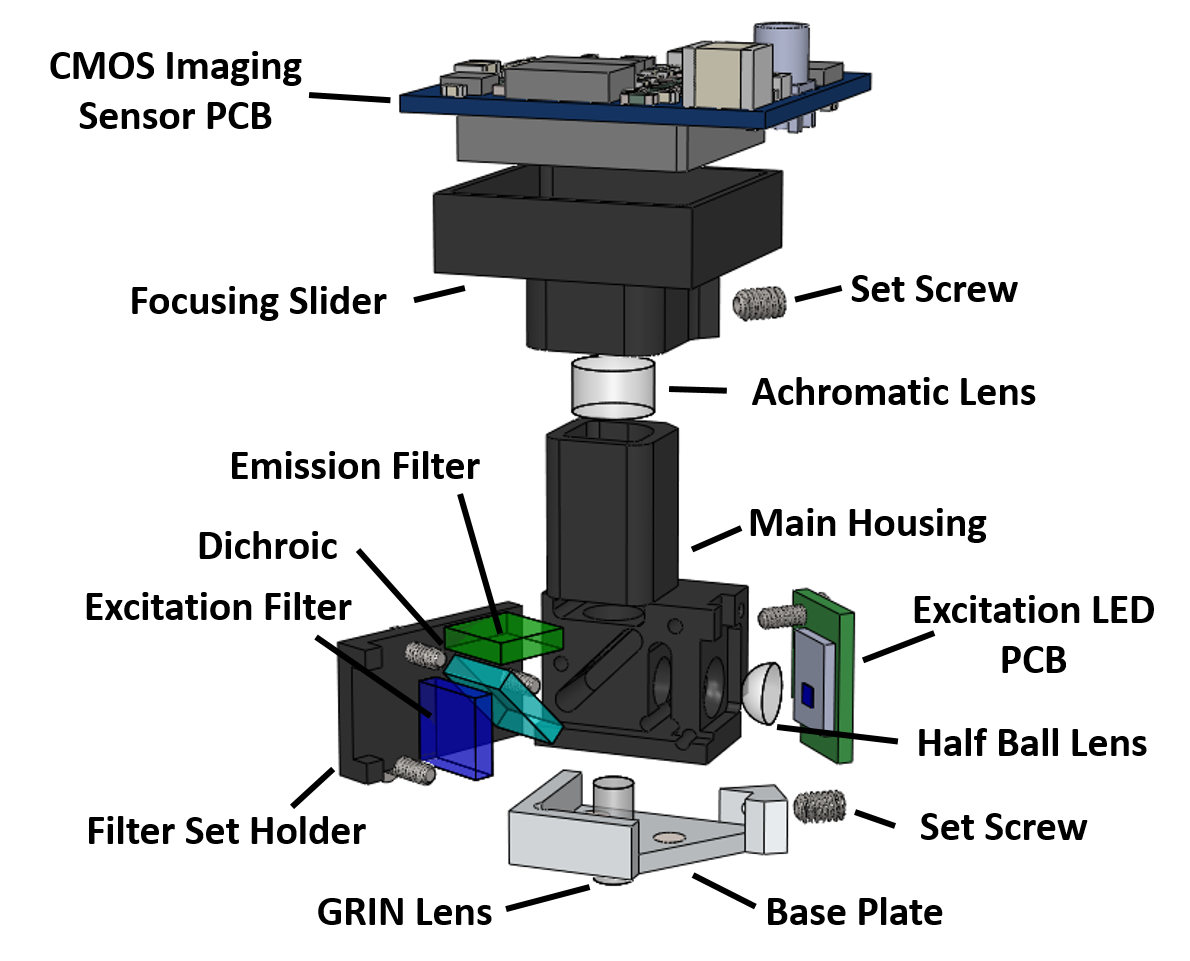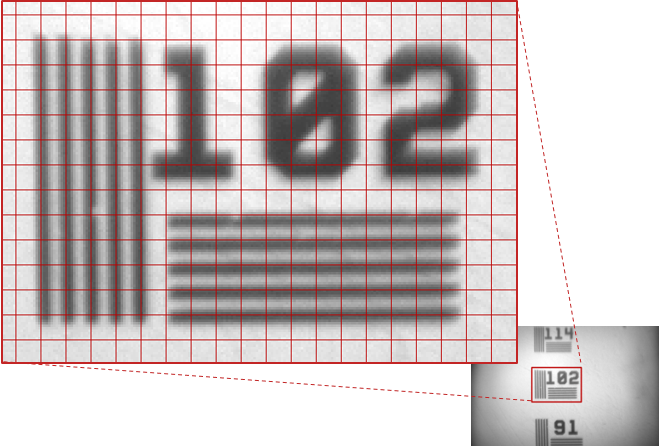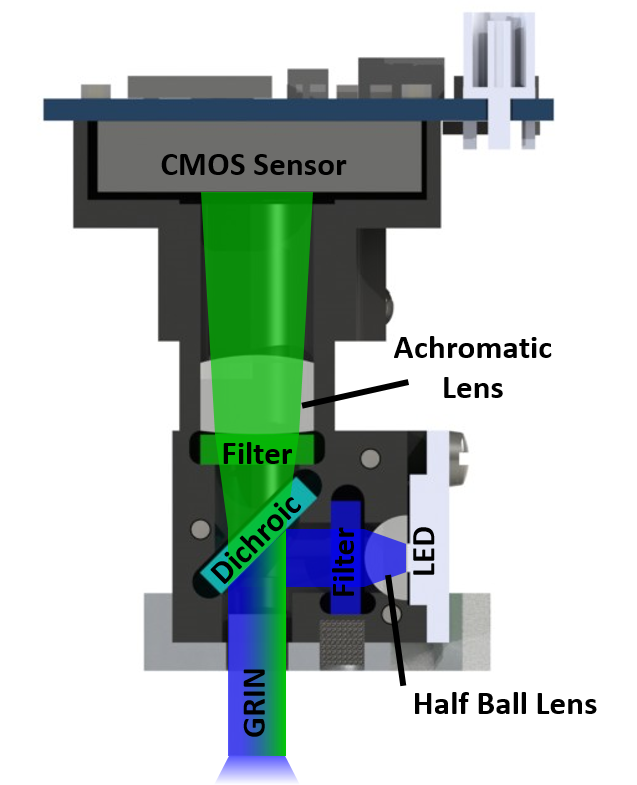Difference between revisions of "Head Mounted Scope"
From UCLA Miniscope
(→Overview) |
(→Overview) |
||
| Line 2: | Line 2: | ||
The head mounted scope consists of a machined Delrin housing, optical filters and lenses, an excitation light source, and CMOS imaging sensor. The mass of the system in under 3 grams and connected to the DAQ hardware using a single coaxial cable. The body and optical components can be easily hand assembled using only forceps and a torx T2 driver. | The head mounted scope consists of a machined Delrin housing, optical filters and lenses, an excitation light source, and CMOS imaging sensor. The mass of the system in under 3 grams and connected to the DAQ hardware using a single coaxial cable. The body and optical components can be easily hand assembled using only forceps and a torx T2 driver. | ||
| − | [[File:MiniscopeExplodedLabled.PNG|frame|Exploded view of the head mounted scope.]] | + | [[File:MiniscopeExplodedLabled.PNG|frame|400px|Exploded view of the head mounted scope.]] |
| − | [[File:MiniscopeCalibrationSlide.png|frame|Image of a calibration slide with 9.8μm line spacing (superimposed red boxes are 10px x 10px)]] | + | [[File:MiniscopeCalibrationSlide.png|frame|400px|Image of a calibration slide with 9.8μm line spacing (superimposed red boxes are 10px x 10px)]] |
== Optical Path == | == Optical Path == | ||
Revision as of 17:50, 4 January 2016
Contents
Overview
The head mounted scope consists of a machined Delrin housing, optical filters and lenses, an excitation light source, and CMOS imaging sensor. The mass of the system in under 3 grams and connected to the DAQ hardware using a single coaxial cable. The body and optical components can be easily hand assembled using only forceps and a torx T2 driver.


